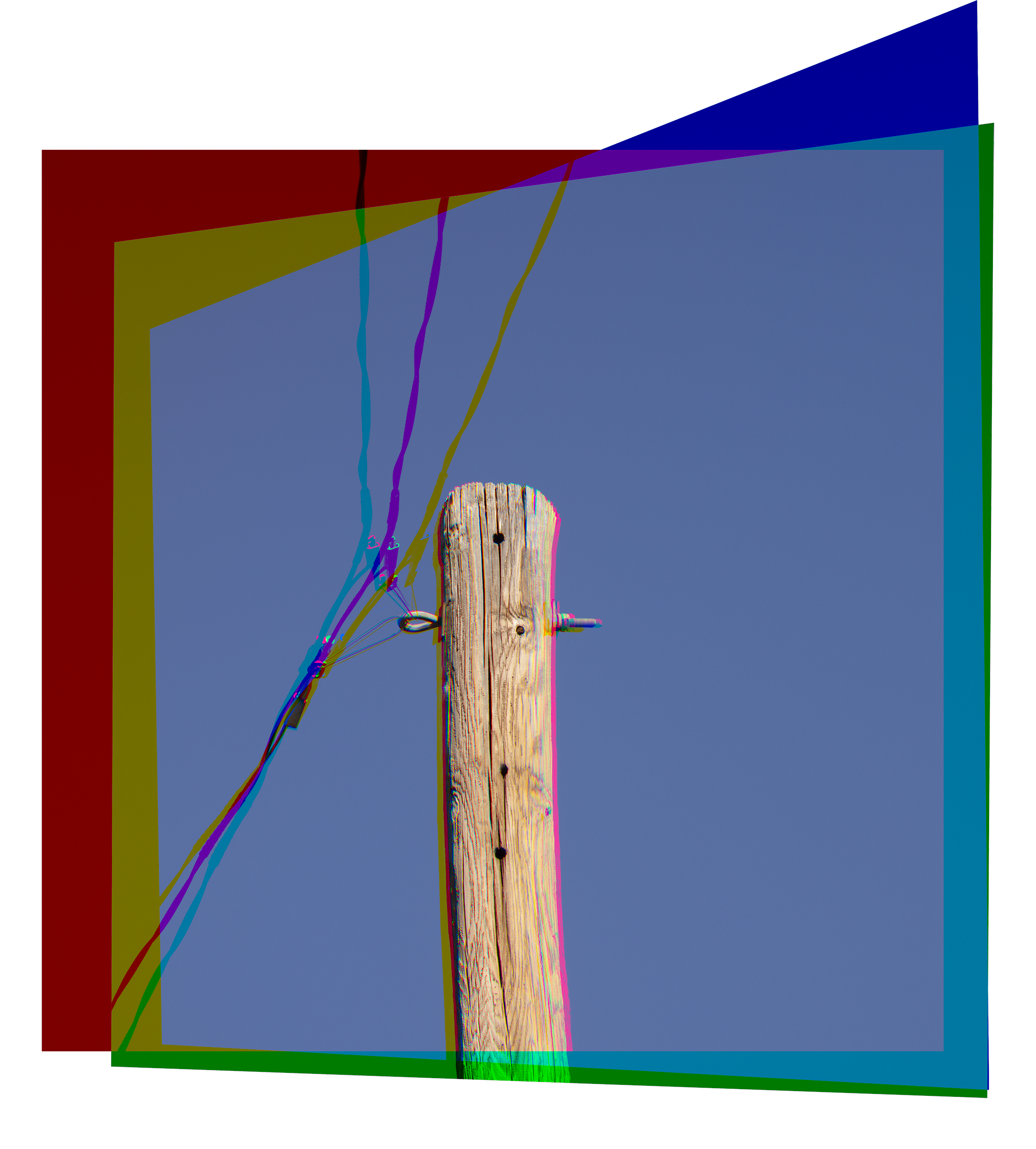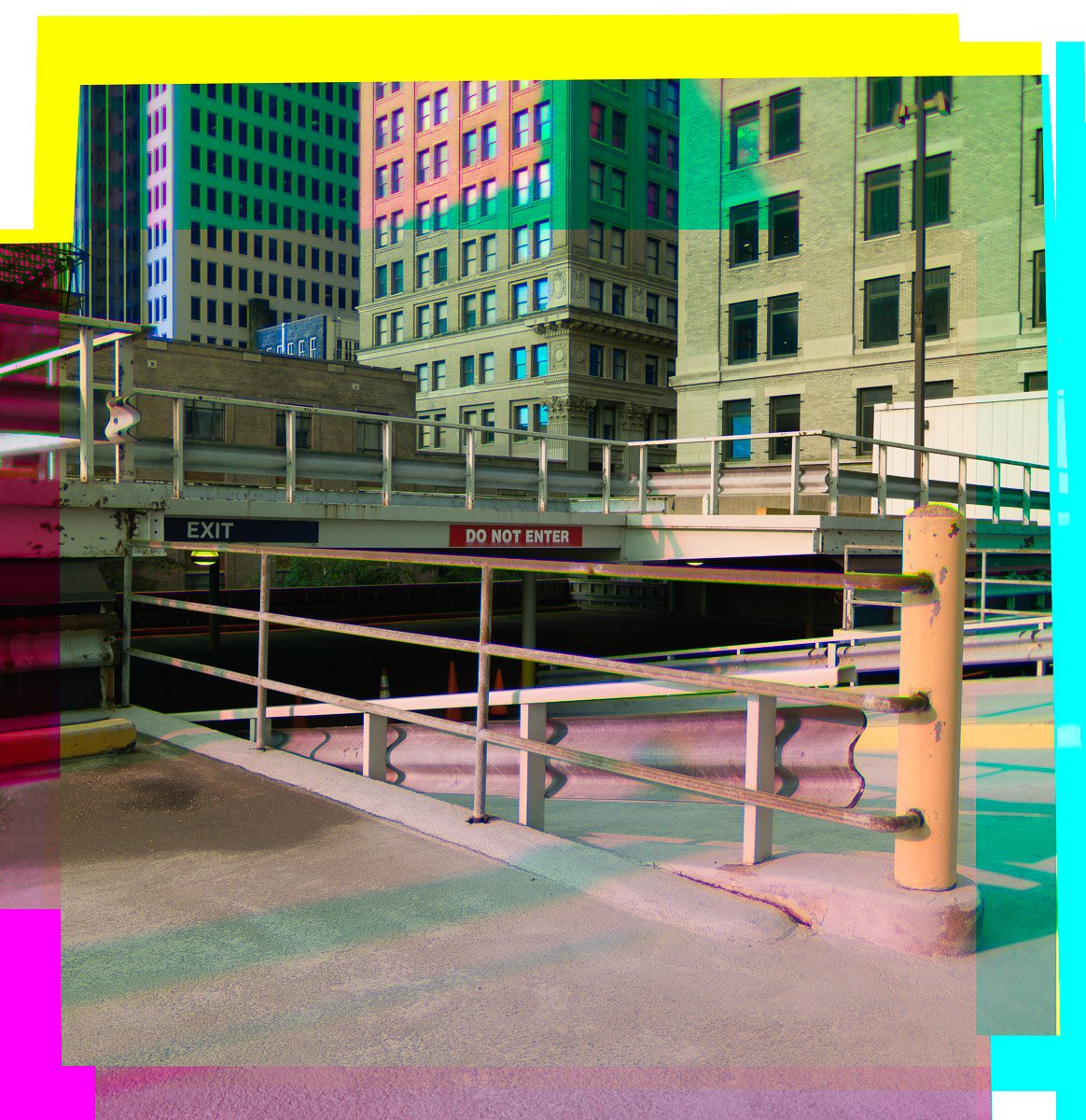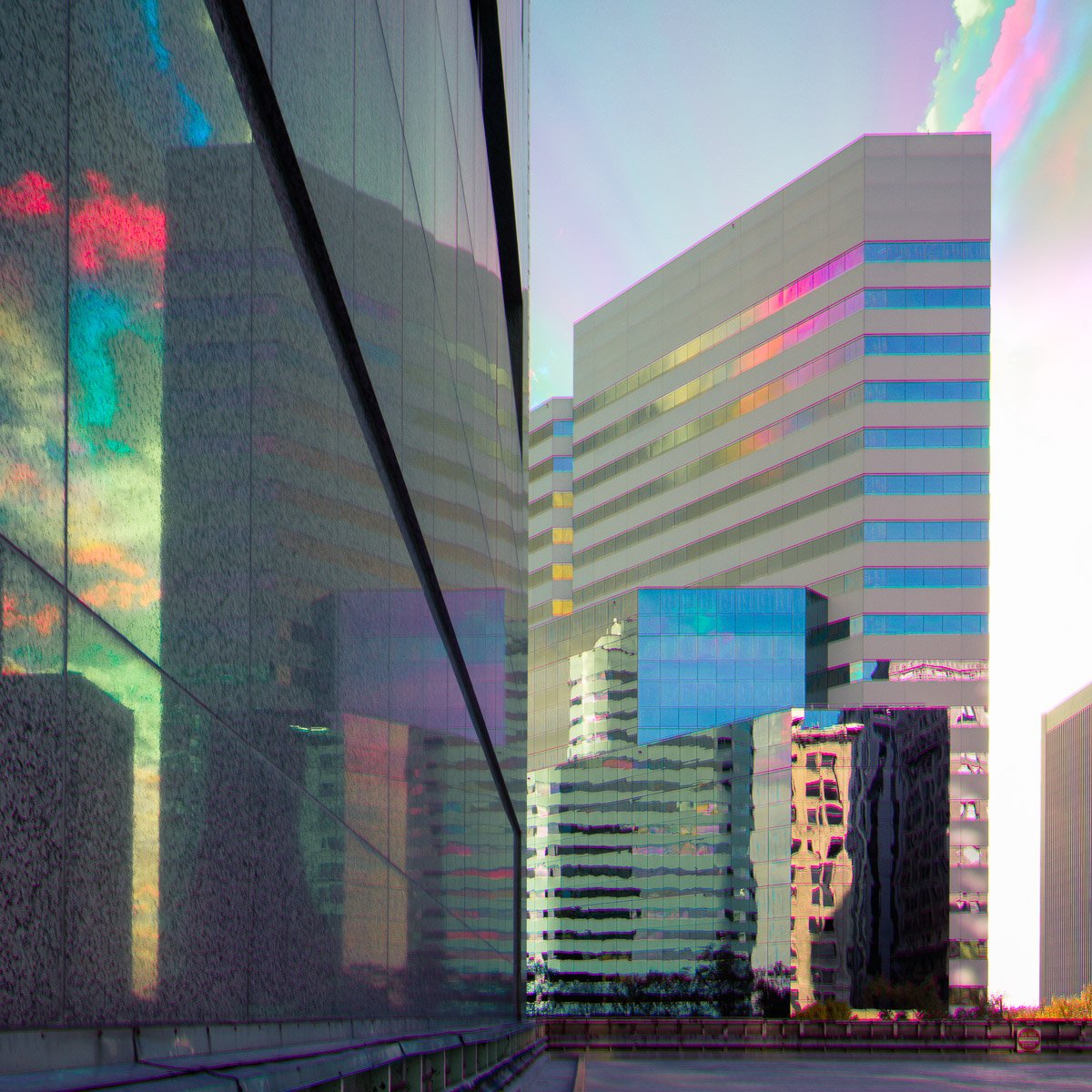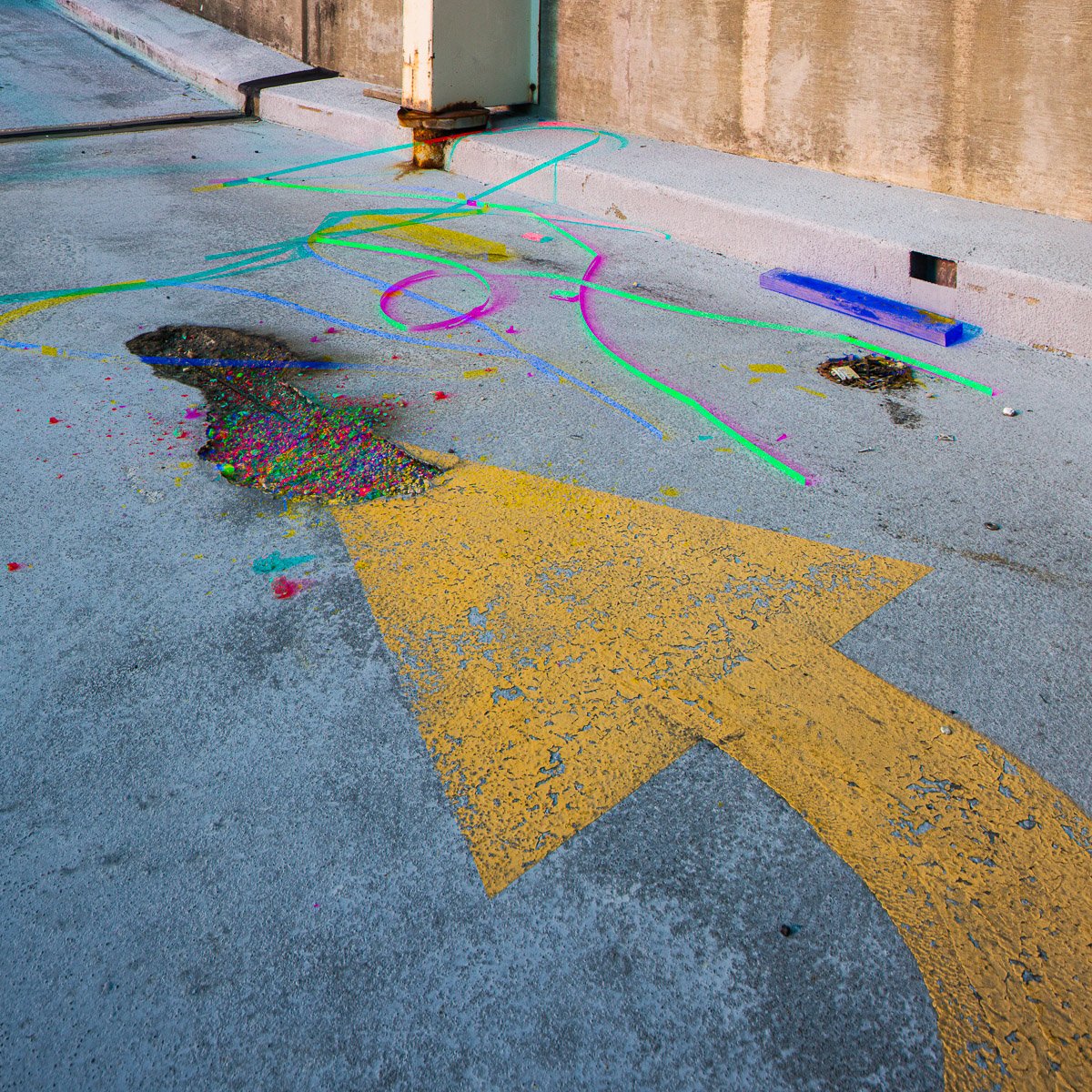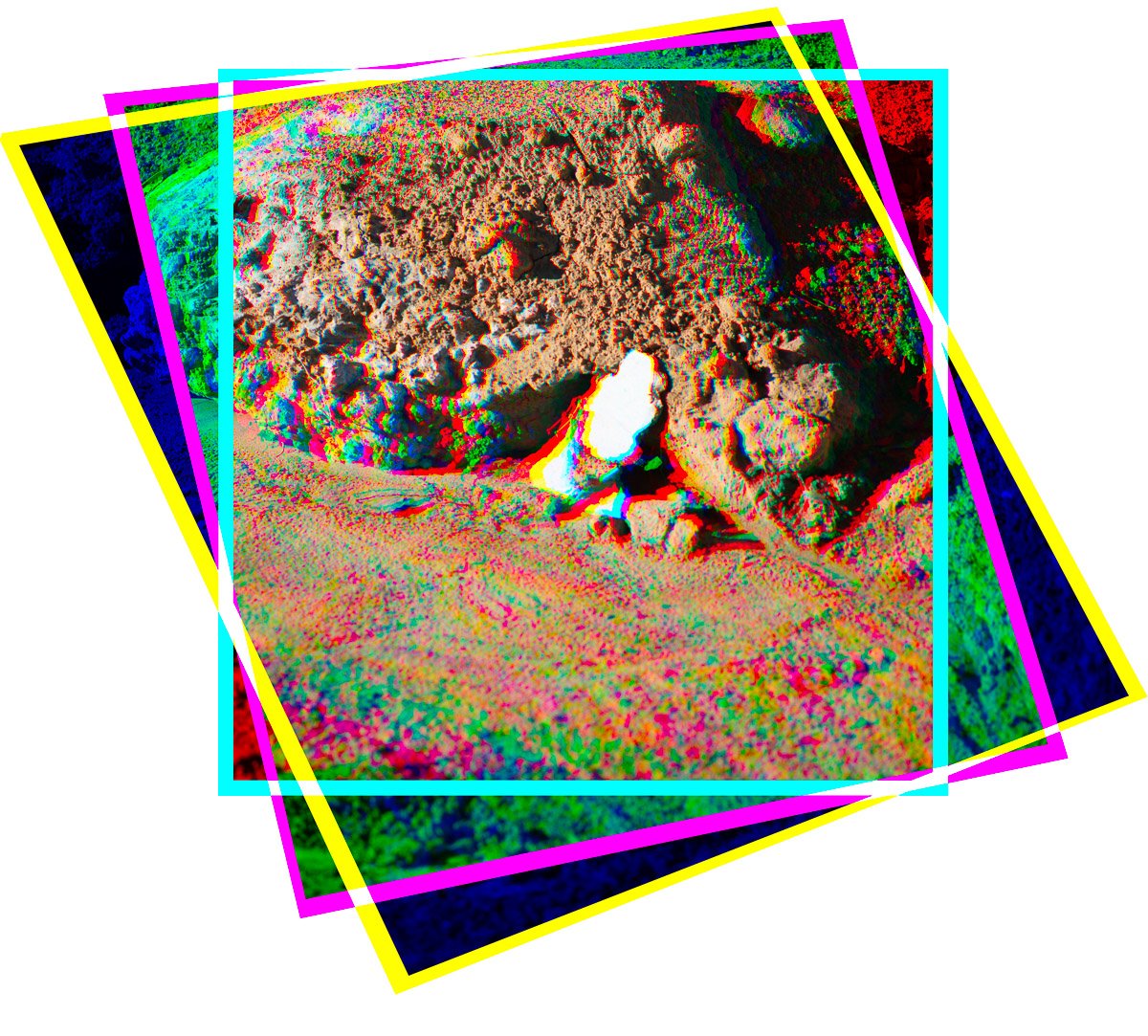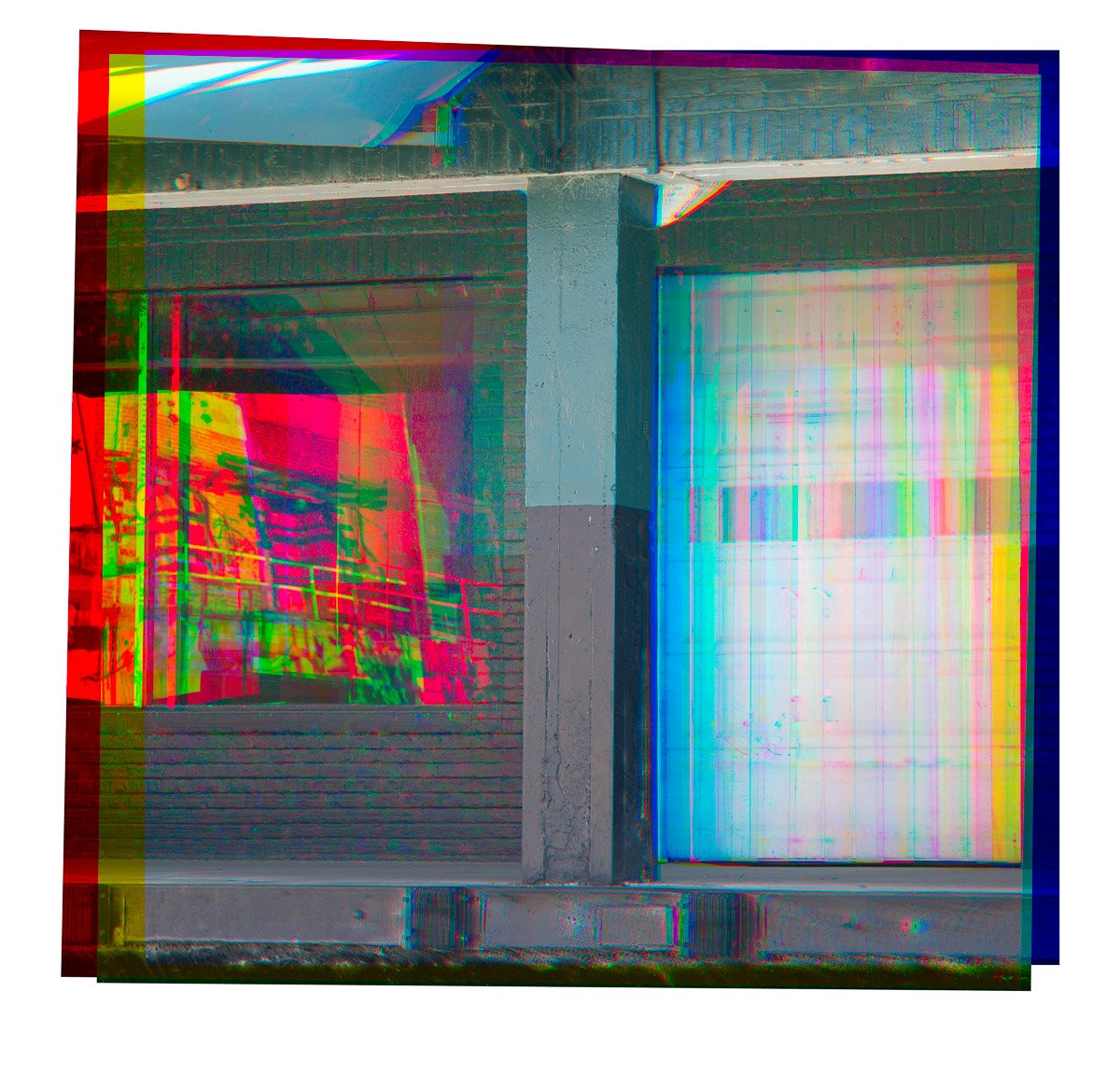Tableaux of Charming Possibilities
Anonymous Chaos Negotiations
What a fascinating world we live in!
In 2022, my wife and I purchased a home in Richmond. We are currently in the process of renovating it, and to help fund the renovations I am selling prints from my most recent series, Tableaux of Charming Possibilities — Anonymous Chaos Negotiations.
This series uses a mix of the tricolor separation process and traditional photographic processes to explore the fantastical and unexpected world of the city we’ve chosen to make a home in. Public spaces are a strange negotiation among strangers, the intersection of thousands. The imagery presented in this series explore the poetry and freedom of the endlessly permeable intersections of public and private lives.
To order prints, use this form. Also available are assorted prints from my Pleasere Turncart Sheres. For details about sizing, pricing, and delivery, refer to the order form. Thank you for your support! Images and a few words about each are below.
Pragmatic Assemblage
Signposts are one way in which we navigate the communal space we all occupy. Using the blank backside of the signs and a multi-image collage of colors, I create a loose-framed assemblage of pragmatism- the edges of the frame echoing the smashed together shapes of the frame.
603D61
I have a special affinity for electrical poles. The group of people who can decipher these numbers and letters stamped on the poles mean anything must be small. Yet, without some capacity to make sense of this ordering, everything the poles carry (phone, telecom, etc.) would slowly break down. What then?
Not All Gold
A circular polarizer filter changes the balance of lights and darks in an image, and when recombining the red, green, and blue channels of several images back into new images, unexpected colors can result. We must remember that not all that glitters is gold, and yet even that which is gold can be deceiving.
Hamlet
Pragmatic pseudo-architecture is a fixture of the modern cityscape. In the same breath that we cry out for new housing in a city, we bemoan the blocky gray-wall, gray-floor, glass and concrete structures that rush into fill new spaces. There is at least a negotiation between these two impulses- the need for housing and the need for good design. Perhaps as these buildings get the dirt and grime and slapdash repairs that come over decades, they will get their own character. For now, the black and gray faces are closely associated in my mind with the red-orange dirt they rise out of as the process of new construction springs up.
Economic Headwinds
The tricolor process is an interesting negotiation between a pre-visualization of what might come out and the actual reality of the images colliding together. The process charms me most when the “fidelity” of the color to the real world is largely maintained, save for a few unexpected twists and turns in the accuracy of the color. Just as the forces of an “economic headwind” are unseen yet utterly felt, color can surge forth in the most interesting and unexpected ways with this process.
Do Not Enter II
“Do Not Enter” is one of my favorite urban poems. Poem is not the right word, of course- it is a commandment. Yet, who is being commanded, and who is doing the commanding? By whose authority is one commanded to not enter, and what force backs up the statement? Of course, for a curious photographer, the injunction is often read more as a suggestion, or as poetry. When a public space is empty and there is no “anonymous chaos negotiations” to take place, it takes on a quality of poetry- a suggestion or a statement to ponder. Yet, all too suddenly, these words take on important directive and authoritative force.
Shining City on a Hill
Heaven is often spoken of as a city. With God as its light and center, we are promised a city in which it is actually possible to live together in full diversity and full unity. The ordering and arrangement of material in such massive structures as skyscrapers is a testament to the limited ordering that we can achieve as human beings now. Yet, it becomes utterly fascinating to me to consider the heavenly form to which it points forward- the possibility of a city without decay, violence, inefficiency, or ugliness.
Yes and Colors
Contrasted to a “city on a hill”, there are pockets of neglect and decay in a city. Poisonous plants, weeds, trash; these things do not need intervention to come forth. There is a sense in which the absence of human cultivation gives way to a more natural state, yet to recognize this as decay implies the order which cultivation otherwise brings forth. In this photo, stark light casts over the surface of such a neglected wall. It seems unlikely to me that this particular wall (once ordered enough to be considered reserved parking) will ever be cultivated once again- yet there is a visual poetry to my eye in the abundance of color and the richness of light that rakes across the surface as it is now.
Clown Show
Another take on the “pragmatic assemblage”— the vivid and basic colors that come forth in many iterations of the tricolor separation process are reminiscent to me of a carnival. I don’t think of them as psychedelic or otherworldly, but rather a prismatic extraction of the multiple meanings and experiences possible within an image. Just as a circus paints performers in gaudy colors and choreographs joyful presentations for delight and amusement, so too do these images paint reality in gaudy colors, allowing us to consider at some distance the “charming possibilities” latent within even the most mundane spaces.
I Can Do That (Because I Did) I
On October 24, 2021, Formula 1 presenter Martin Brundle was shooed away by a bodyguard after asking questions of the rapper Megan Thee Stallion during his normal “grid walk”, a time for him to ask celebrities questions before a Formula 1 race. The bodyguard said “you can’t do that”, and Brundle replied “I can do that, because I did”. In this I see the basic negotiation of urban spaces- perhaps one person says “you can’t do that”, and another merely replies “I can, because I did”. The question then becomes, “now what?” There are many things you can and cannot do in a city, but I have often found joy and pleasure exploring very limited and “vernacular” sculptures such as this. Using found materials, assembling them quickly in public spaces, and taking them down just as fast, who could possibly say “you can’t do that”? The preemptive answer becomes “I can do that, because I did”
I Can Do That (Because I Did) III
I don’t leave trash in cities, but sometimes I pick it up and move it around. I am mystified by the fact that concrete can be poured and painted and form a suitable place for hundreds of cars to park in a city. I didn’t make that scar on the parking deck surface, but I did stop to photograph it.
Morality Play
Light (side) and dark (side) of a building here, not much more to say. The shifting light off of glass reflections is mystifying. We often put our heads down and move through it without much additional thought, yet how beautiful and mysterious are those forms!
A City of Negative Space
If you consider buildings as positive forms, it is very strange to me to consider all the negative space in between buildings. I think this tricolor process is a decent way of “activating” this negative space compositionally. A dark building against an overly bright sky is no longer an underexposed form, but to my eye, I can suddenly see the space all around the form in a new way. How great a volume of air there are between these buildings!
Antifragility
Glass and concrete put together are not “natural”, yet the rectangular volumes that they define suddenly start to have a natural feeling in a city. The horizontal and vertical planes make sense, and we see the forms without seeing the surface. A plaza comprised of glass curtain walls in Richmond is a mystifying place to stand, a house of mirrors that was designed for commerce and not for amusement. With some care and investment of time, suddenly they snap away from our normal experience of volume and give way to an unexpected composition.
Carefully Laid Plans
The tricolor process yields images which are at once familiar forms and alien colors. The colors obfuscate and reveal simultaneously. When there is significant fracturing of the forms through the scattering of colors, the forms may be hidden from view and an underlying abstracted logic revealed. Yet, when there is agreement of the color layers with the underlying form but shifting light, the form of the city is revealed in new ways. Without familiar colors, the viewer must consider a formerly invisible space in a new way.
Public
How much is wrapped up in that word “public”! The history of public service, public works, and all the power dynamics of who is in and outside of that public are in that word. They are not often revealed, but they are assumed.
Wealth Gap I
I have taken many photos of the Federal Reserve Bank of Richmond, and this is one of the sneakiest. The form of the building is not visible in any way- the regular facade becomes completely absorbed and defined by the surrounding structures. In the title, Wealth Gap is both the idea that the financial systems of the United States create wealth to fill in the gaps for some (whatever those gaps may be!) yet also that there is a gap in the degree of wealth experienced by people. The warm and dancing colors become sinister and mysterious yet oddly alluring.
Mediator
What a simple device the stoplight is. It is a mediator that we all understand. The sequence of lights are carefully orchestrated throughout a city to keep traffic moving and not stopped. Even at night, with no cars nearby, many are loath to run a red light- there is real and experiential motivation to agree to the simple social mediation that is meted out by the modest stoplight.
Most of a Barrier
What is a fence? And, what are fenceposts without a fence to speak of? When a fence is erected, the barrier may be inconvenient or well designed towards the ends of keeping others out. It may be shoddy or quickly assembled. It may be permanent, cared for, maintained. It may be ignored. It may be breached, or degraded, or rotting after 50 years of neglect. Yet, fresh fence poles without the fence boards or cross beams to speak of aren’t much good for anything. They are a gesture without any underlying force, a mere suggestion or a well-laid plan.
Good Intentions Portal
How many people litter in a city? How many people take care of their own homes? How many people take better care of their own homes than they do the sidewalk across the street from them, or a sidewalk on the other side of the city? How far does a presumption of courtesy or “good intentions” carry the cleanliness of a public space? What is the actual experiential barrier between a public and private space, and how does our care or stewardship change over that threshold?
Shattered and Scattered
Buildings reflecting buildings- there is nothing really “natural” in this image except for the sky. The trees and flowers are all manicured and curated in relation to the built environment. The glass of a camera lens perfectly organizes the light coming in to strike the camera sensor, yet there is no organization which can put the image reflected in the glass back together.
Gatekeeper
The tricolor process is a fickle process and I love it. There are certain times when the simplicity reveals something quite alluring, simple, almost feeling inevitable in its presentation. More often than not it is a hodgepodge mess, but there is the occasional time when there’s just enough slippage and just enough alignment that the result is really worth pondering. Revisiting these power poles in a simple, pared back manner gave me some fruitful images along those lines.
Divergence II
I love this image as well. Though this image is of one pole with one line, the motion of the camera and recombination process issues forth three new lines of divergence. The motion of the process is laid bare in the image, yet the form in the image is not unnatural. A scene of three wires tied to one pole is hardly a surreal or unnerving sight- yet the discrepancy between the images creates an unreconciled spectroscopy-like divergence. The pole is really working its hardest to hold it together, yet to what effect?
Even the Weeds
In Yes and Colors I looked at weeds growing up over a wall in a city. These are weeds growing up in an empty lot nearby to the city. Plants have a particular beauty (yes, Even the Weeds) yet there are many times which we must clear them out in order to organize space for new reasons. I believe there can be purposefulness and glory in the weeds in an empty lot. Perhaps the thought is not deep or profound, but simple and joyful and worth pausing over all the same.
A Simple House of Worship
The simple triangular prism, the simple Cross atop it. Using the tricolor process, there is suddenly a stress or fracturing therein. Yet, orbiting around the modest steeple, there is a point of reference which holds the tension of the image together.
Abbreviated Negotiator
We return to the modest traffic light, the urban negotiator. This one is all covered and shrouded for some reason. In the city, traffic lights seem to have more dignity or authority, a more stressful and important job to do than a lonely single light in the countryside. The massive poles projecting out over large urban intersections silhouetted in sheer glass faces is a magisterial setting for an otherwise modest negotiator.
An Auspicious Place
A lonely and humble garden arch in a backyard. A simple wooden structure which suddenly marks out and creates a space from otherwise undifferentiated volume. It is a simple act of stewardship and placemaking for human beings, and even in the “wilds” of a rather unkempt urban backyard, the arch and small bench is a place for consideration and repose.
Doorn’t
What a space this is! The fresh brick and fresh paint alongside the reflected morning sun was a vision for me. What was the purpose of bricking over this entrance? Will there be a new coat of paint soon, or will the unpainted brick forever serve as a sort of stark and off-putting statement of anti-hospitality on the storefront?
Panopticon
Occasionally, the chaos of the tricolor process settles into a structure that is harmonious even though everything else looks quite chaotic. I’ve found that when there is a strong, central pivot-point, this effect is more likely to come forward. Coming from the 19th century idea of a prison with a central observation point, “panopticon” is now shorthand for the idea of surveillance, an all-seeing eye. The crisscrossing lines and central tie-point is reminiscent of that idea, even as it may be a “benevolent panopticon”.
Emergency Gathering Area II
What a phrase in a sign! Although this is in an abandoned parking lot- I doubt there will be any emergency gatherings in this exact area any time soon. Still, there is a rather alarming and beautiful idea to me in those three urgent and overlooked words found in an abandoned and overlooked urban space.
Drift
Three images taken a few steps apart create a stressed and fractured pattern out of a modest pile of dirt. By expanding the frames of the separate color layers out just a bit, the process is foreground and the simple imagery is abstracted within a “drifting” frame.
Loading Dock
I am attracted to loading docks and the idea that it is a functional port, a utilitarian space which conforms to certain standards and expectations. Just as a palette is a vernacular form which facilitates commerce and the movement of goods, a loading dock is a modest yet agreed-upon structure which facilitates so many possibilities within the urban environment.
Antiplaza
Finally, we have the “antiplaza”, an abundant image to my eye which does not yet contain anything strictly “natural”. The grass and trees are laid down for the functional purpose of adding some natural pacing and variety to the space. Yet, located as they are among so much glass and concrete, they take on an unnatural or sub-natural effect which still has echoes of natural beauty in the midst of more utilitarian public space. The public square this is not, even as it harkens back to the idea of public spaces within a city.

